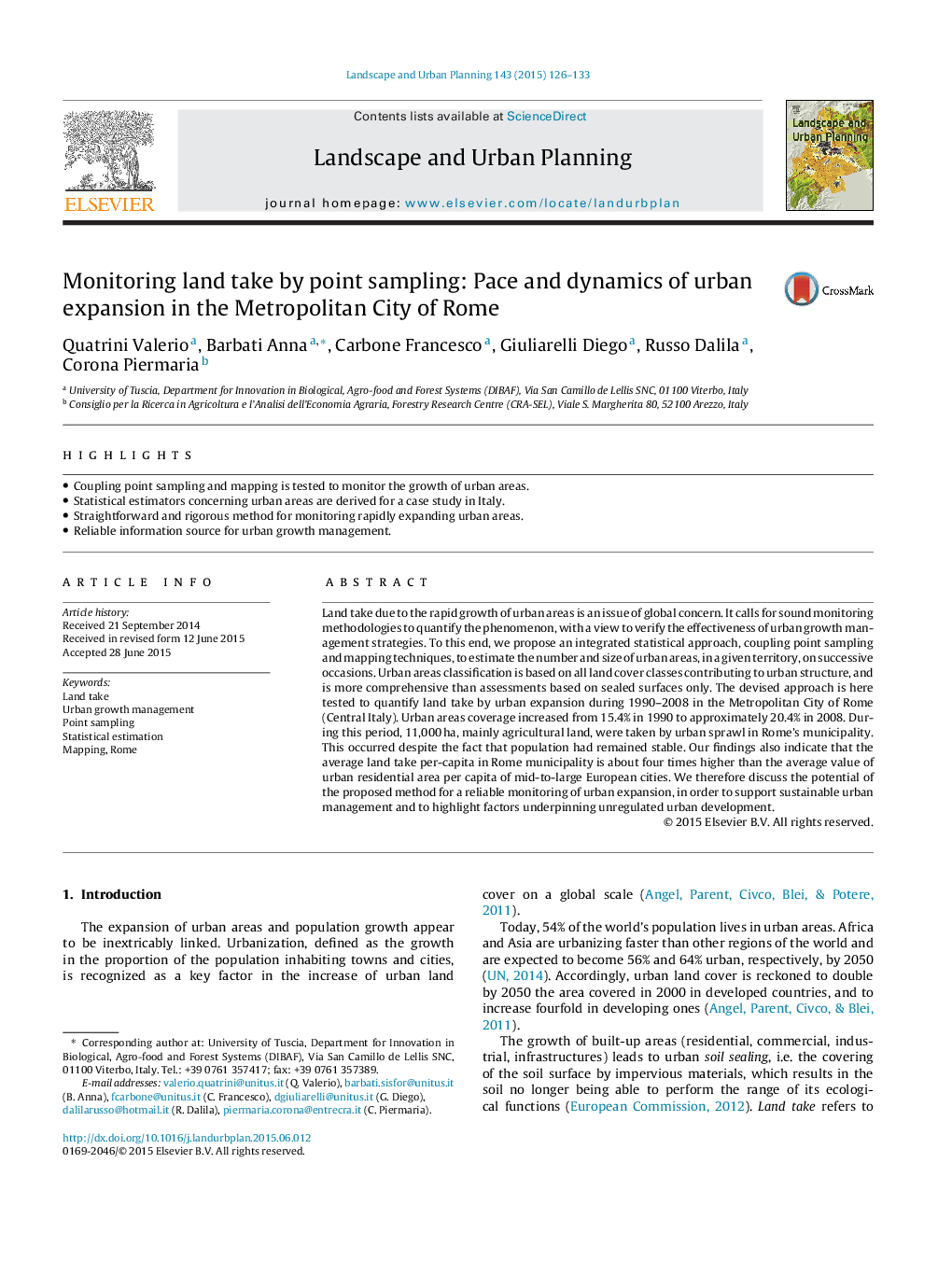| Article ID | Journal | Published Year | Pages | File Type |
|---|---|---|---|---|
| 7460997 | Landscape and Urban Planning | 2015 | 8 Pages |
Abstract
Land take due to the rapid growth of urban areas is an issue of global concern. It calls for sound monitoring methodologies to quantify the phenomenon, with a view to verify the effectiveness of urban growth management strategies. To this end, we propose an integrated statistical approach, coupling point sampling and mapping techniques, to estimate the number and size of urban areas, in a given territory, on successive occasions. Urban areas classification is based on all land cover classes contributing to urban structure, and is more comprehensive than assessments based on sealed surfaces only. The devised approach is here tested to quantify land take by urban expansion during 1990-2008 in the Metropolitan City of Rome (Central Italy). Urban areas coverage increased from 15.4% in 1990 to approximately 20.4% in 2008. During this period, 11,000Â ha, mainly agricultural land, were taken by urban sprawl in Rome's municipality. This occurred despite the fact that population had remained stable. Our findings also indicate that the average land take per-capita in Rome municipality is about four times higher than the average value of urban residential area per capita of mid-to-large European cities. We therefore discuss the potential of the proposed method for a reliable monitoring of urban expansion, in order to support sustainable urban management and to highlight factors underpinning unregulated urban development.
Related Topics
Life Sciences
Agricultural and Biological Sciences
Ecology, Evolution, Behavior and Systematics
Authors
Quatrini Valerio, Barbati Anna, Carbone Francesco, Giuliarelli Diego, Russo Dalila, Corona Piermaria,
